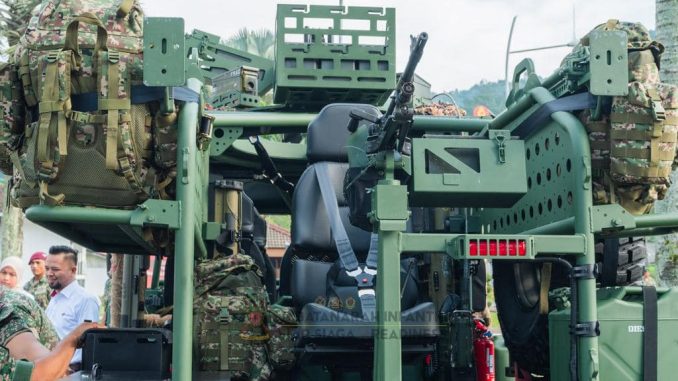
SHAH ALAM: Back in June, General Hafizuddeain Jantan, was the deputy Army chief who witnessed the delivery of various equipment, mostly vehicles, small arms, boats, and its related equipment. Fast forward four months, Hafizuddeain, now the Army chief was the one who took official delivery of vehicles, combat accessories, boats, and its related equipment.
The Army release said a total of 661 units of equipment were officially delivered on October 31, amongst them, three-tonne GS cargo trucks, hybrid VTOL UAS, field ambulances, Automatic-Grenade Launcher vehicles, Special Operations Vehicles, assault boats, trailers, logistic support bridge, 60mm mortars, night vision goggles and binoculars.
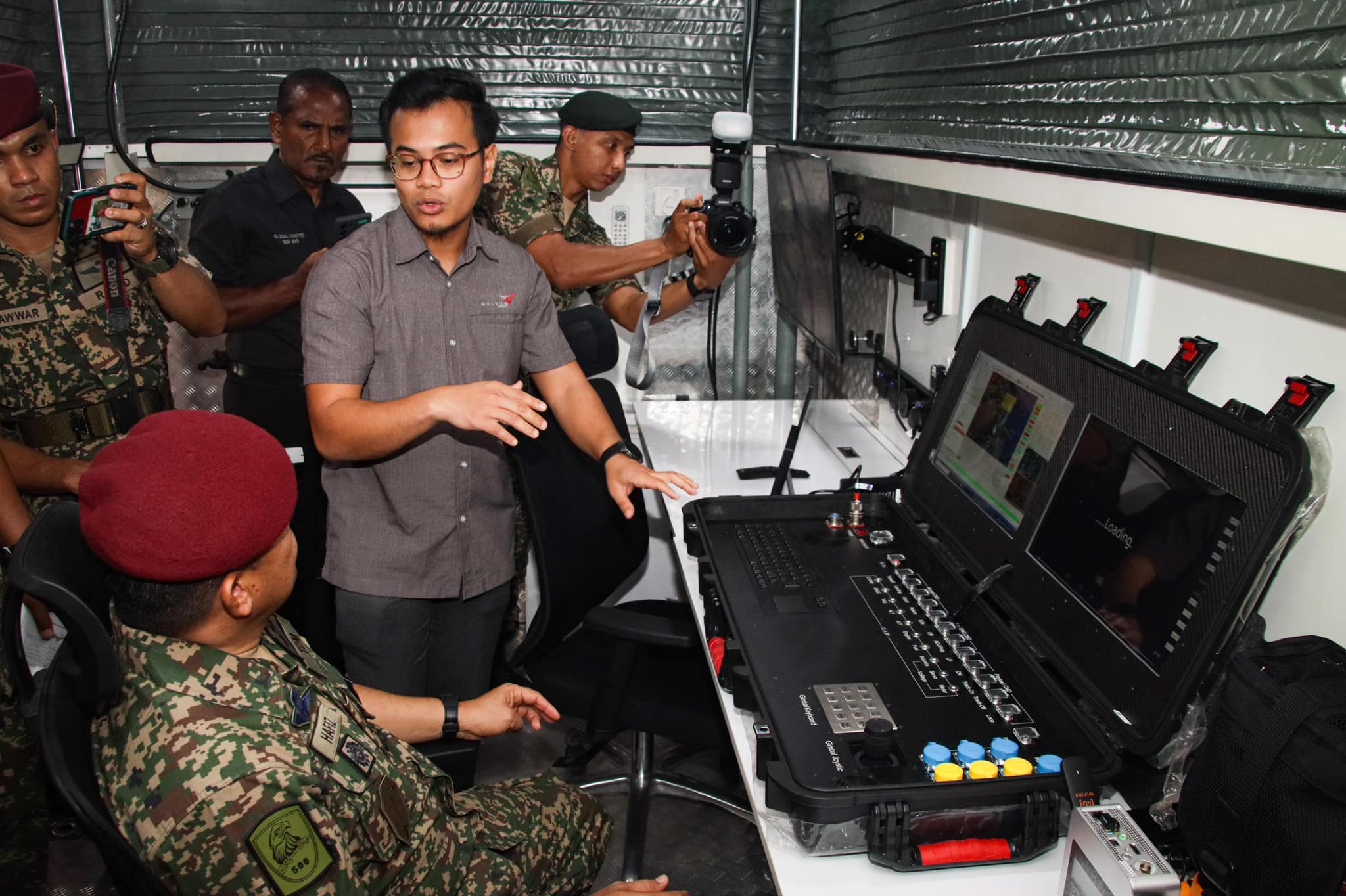
The three-tonne GS Cargo trucks are of course the Iveco trucks supplied by Deftech as reported previously. The same trucks were delivered last June.
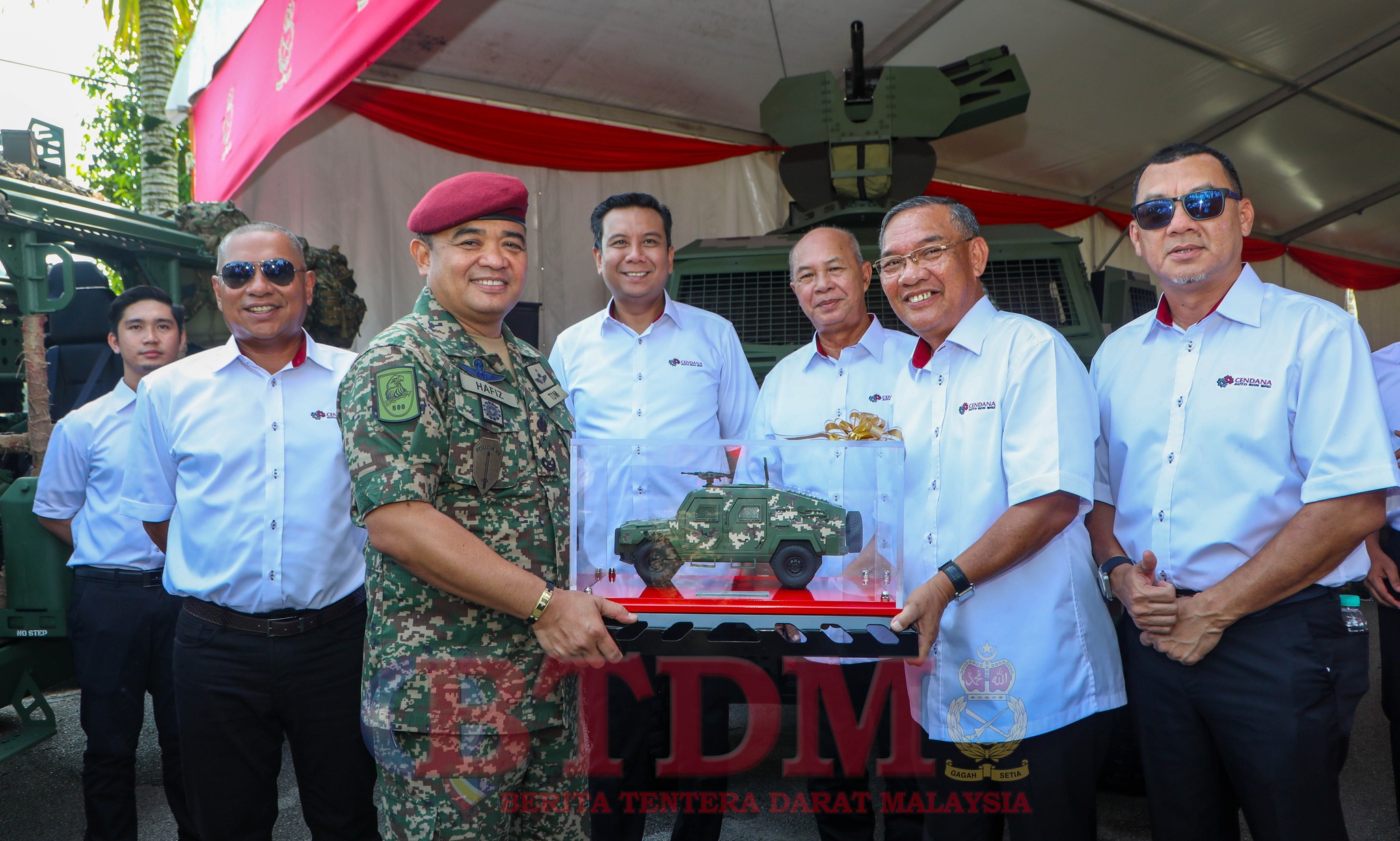
The AGL and Special Operations Vehicles are of course from Cendana Auto which won the contract for the vehicles, as also reported by Malaysian Defence. I was told that SOV looked some what different from the ones shown at DSA 2022, which I did not attend due to Covid 19. The vehicle carries four passenger and a driver and are armed with one heavy machine gun and two light machine gun.
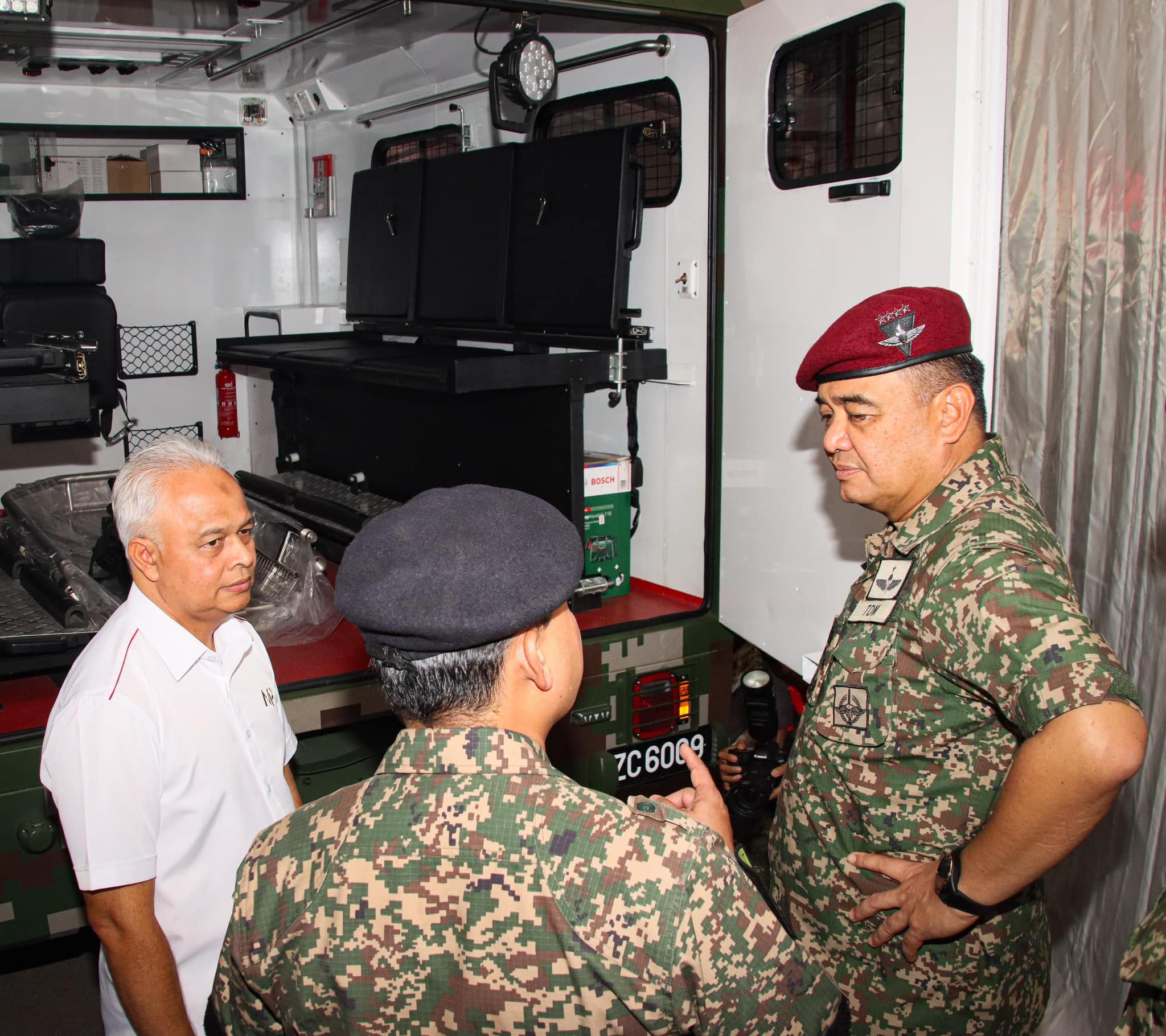
The AGL carrier is one of the variants of the weapon carriers contracted to Cendana Auto, the other two being the HMG and ATGW vehicles. AVP Engineering Sdn Bhd was awarded the RM10.08 million contract to supply and deliver 18 field ambulances for the Army from a tender published in 2020.
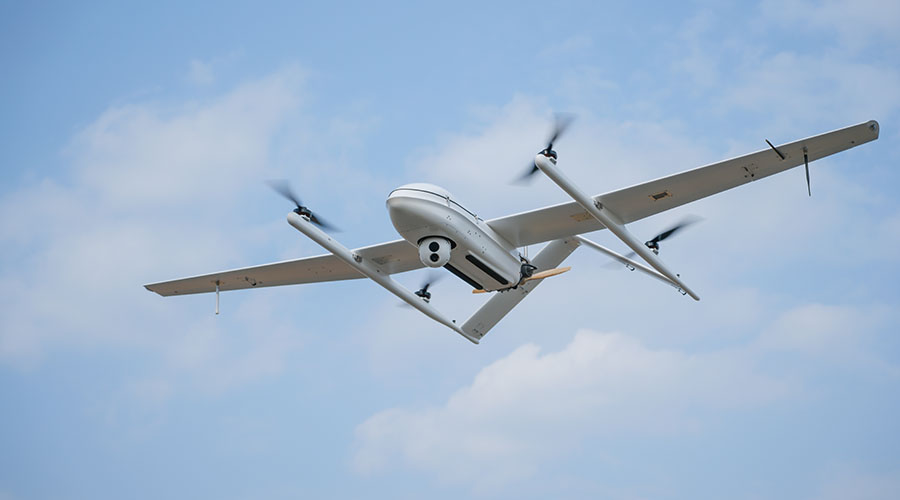
Anyhow, the Army is getting three sets of the CW-25D hybrid VTOL UAS which is manufactured by JOUAV Drone Company of China. Each UAS system comprised of two UAV with a truck mounted command and control vehicle.
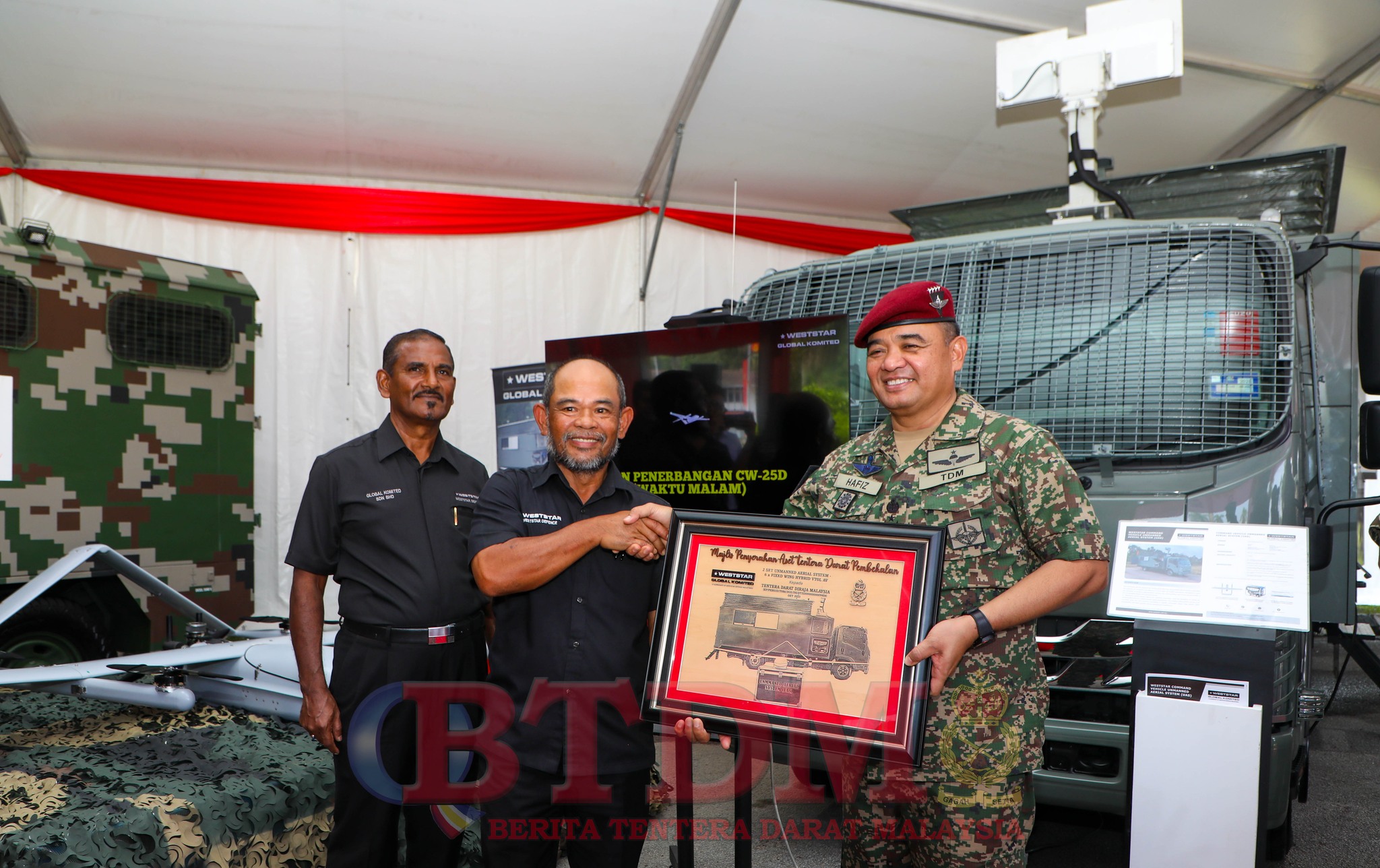
It is interesting to note that JOUAV website did not mentioned the D version of the CW-25 but Global Komited Sdn Bhd banners at the ceremony clearly stated its was supplying the CW-25D UAS to the Army (see above picture). The tender for the hybrid VTOL UAS complete with command-and-control vehicle was published in 2021 and the contract was awarded to Global Dos Sdn Bhd, with an LOA of RM10.75 million. The UAS is operated by the Malaysian Defence Intelligence Organisation.
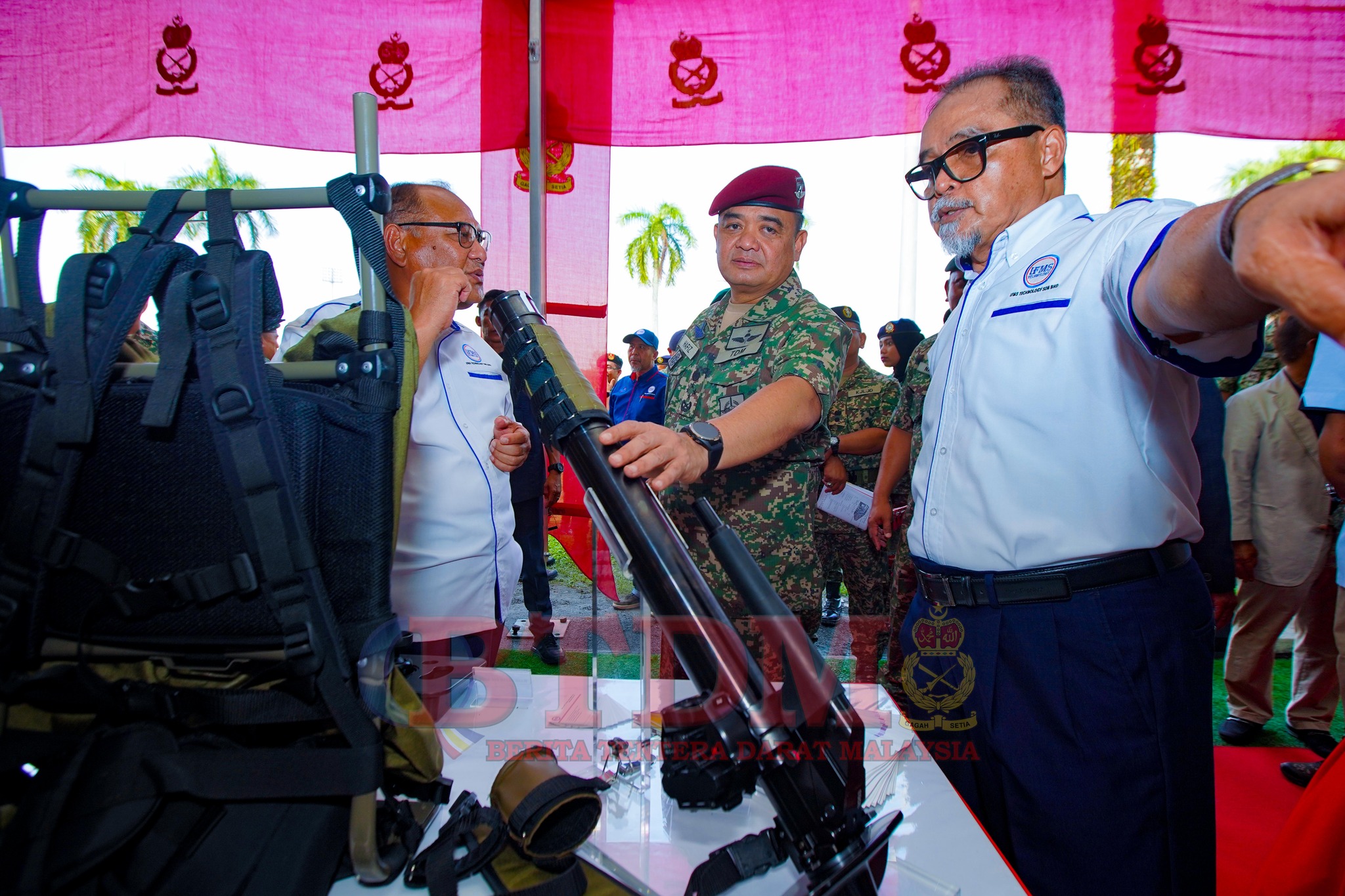
The 60mm mortars delivered is the HDS M6 Commando version which is manufactured by Hirtenberger Defence Systems as posted earlier by Malaysian Defence. As stated in that post, the contract winner was not announced though from pictures from the ceremony, the company which won the tender was IFMS Technology Sdn Bhd.
The logistic support bridge delivered is likely part of the earlier order as posted here.
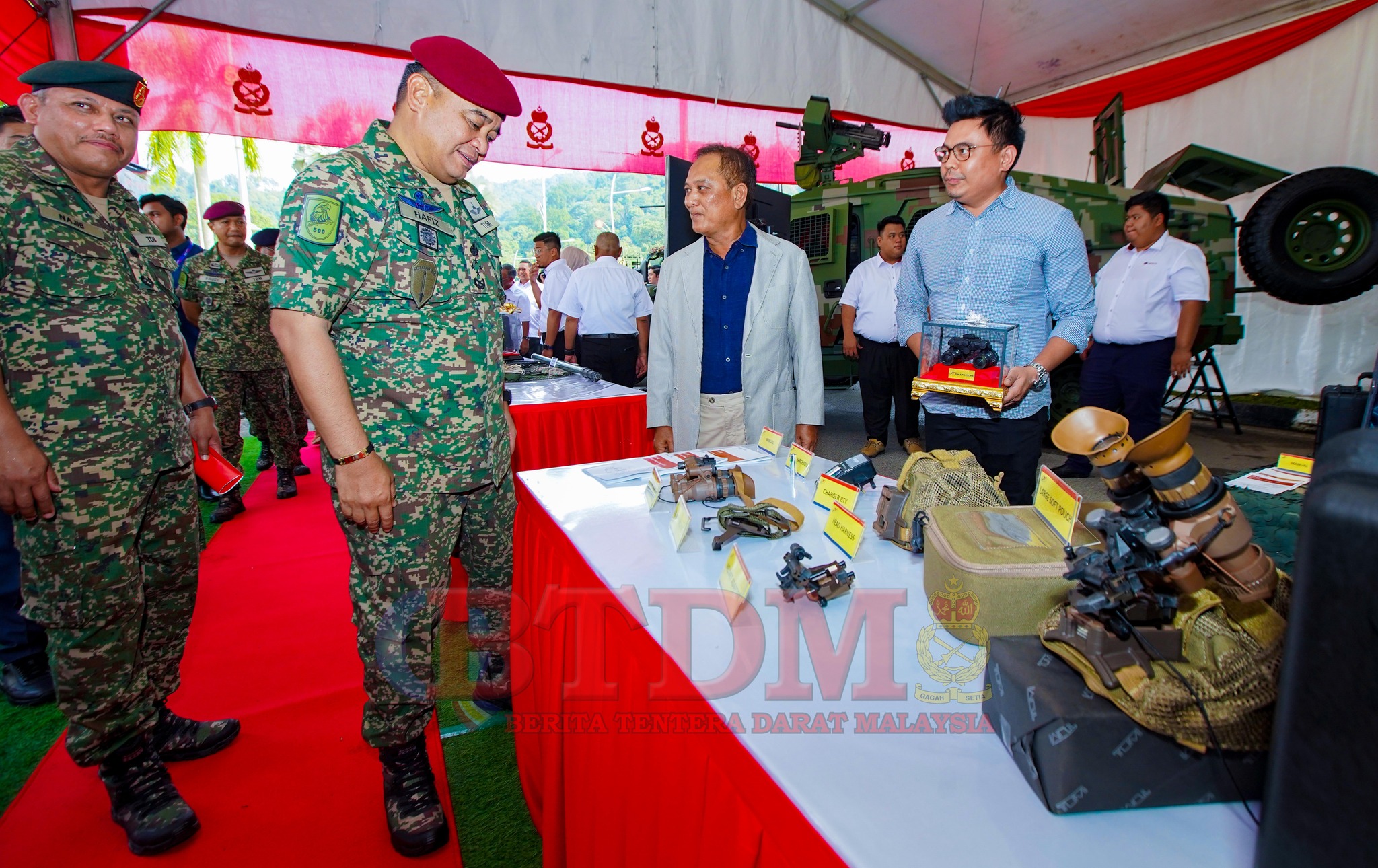
As for the NVG, this is likely from a tender published for 253 units of NVG for
The Special Forces Units, Infantry Battalions, and Combat Support Units such as Armoured, Engineer and Artillery Regiments are required to conduct operation during day and night. To enable them to conduct operation effectively, there is a need for these units to be equipped with night vision goggle. It shall be able to be used for land, air or maritime operations.
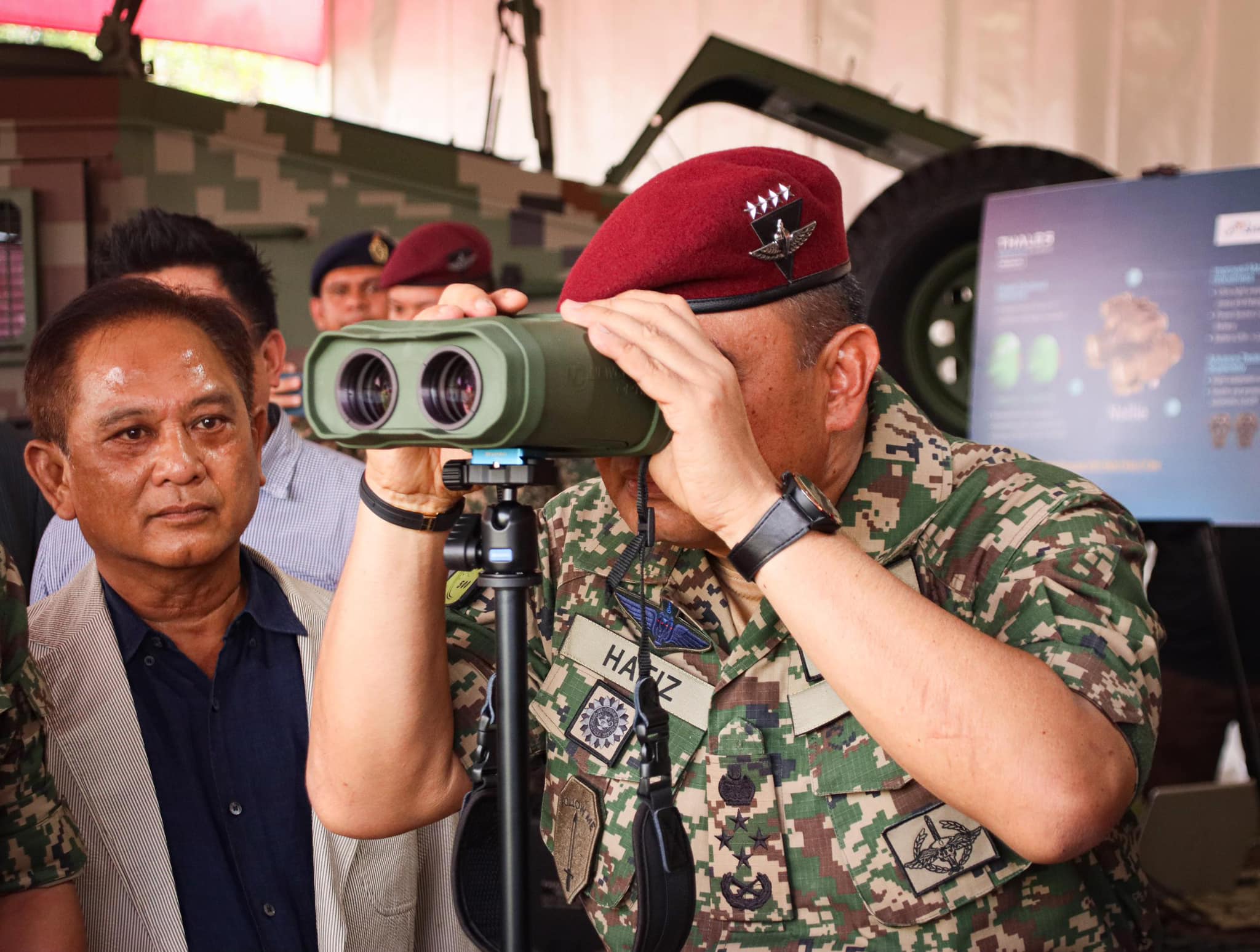
The LOA of RM17.5 million was awarded to Shafleena Venture Sdn Bhd. The Army did not identify the make of the NVG, though it is the Thales Nellie. As for the binoculars, it is likely a the one with laser range finder feature manufactured by Newcon Optik of Canada. The LOA of RM3.9 million for 60 binocular/laser range finders – tender published in 2021 – was awarded to Global Combined Technology Sdn Bhd.
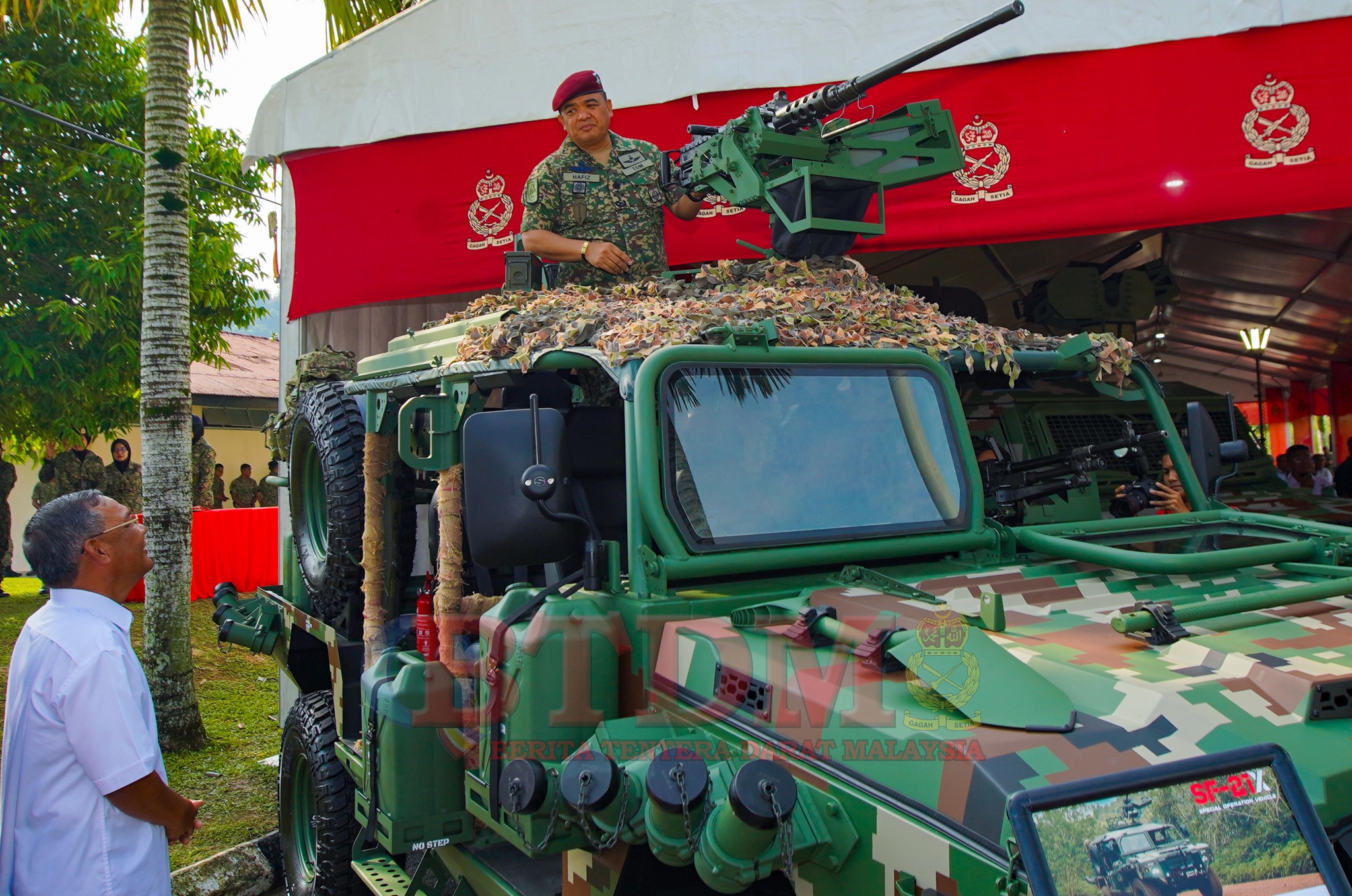
As for the assault boats and trailer, it is likely the last batch of the items delivered to the Army. More on this here in the June post.
Post updated.
— Malaysian Defence.



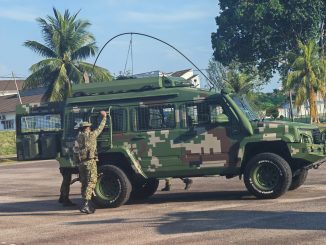

It’s good were getting UASs but most of what we’re getting ends up with the Malaysian Defence Intelligence Organisation or Royal Intelligence Corps. We have to start equipping infantry, armoured and artillery units with UASs; irrespective of whether or they’re cheaper commercial ones with less range and endurance and more vulnerable to EW:
We’ve long reached the stage [even before the Ukraine war] where UASs are essential and needed in large numbers; as well as being viewed and understood as expendable.
Ehh..I thought the army doesnt really like that SOV..or maybe cendana auto already tweak that SOV’s design and build with inputs from army test team..Or maybe TD are forced to buy that SOV even when it doesnt meet their requirements?
From Youtube, D variant is night vision variant
That UAS is something that could’ve been bought more if the military is satisfied with its performances and reliability. A winged VTOL is a pretty novel idea
No idea, whether they like it or not.
The ATGW for these new ATGW carriers I assume will be the Karaok?
Yes, likely though some launchers may well go to GGK and 10 Para.
Dundun – “That UAS is something that could’ve been bought more if the military is satisfied with its performances and reliability”
What are you on about? It’s about funding; not about anything else. A lot of things are reliable and meet requirements: funding?
As part of the original plan a local design was supposed to have been bought and progressively upgraded but we know how well that went. If Aludra has met the requirement CTRM would never have had to acquire Scanesgles for lease to the government.
The skies the limit as to choices when buying from abroad; the problem was/is funding. We’ll do what we always do; buy a bit of something but never in sufficient quantities.
It’s Thales NELLIE binocular NVG
>a lot of things are reliable
And? A lot of things that aren’t as reliable and doesnt exactly meet the requirements and still got the funding
If we already have funding issue to begin with then should do we squander the little money we had on junks?
Is it really practical nowadays for our GGK to go on long range patrols or special ops in soft skinned vehicles? Even the SAS has abandoned their pink panther land rovers for armored mine protected Supacat Jackals given their experience with IED in Afghanistan.
Until they have the budget for it, armoured vehicles, they have to rely on soft skin vehicles. That said the SOV is lightly armoured I am told. Not too much as they need to change the chassis for it and a bigger budget of course.
Dundun – “should do we squander the little money we had on junks”
What “junks” have we bought or are going to buy? Share it with me. Please ….
>junks
Spexer radar, MD530 helo, that thailand made land rover replacement, Mb-339c, even the fulmars can be considered junks due to how unreliable they are
Watch number of Hamas social media post about RPG tandem warhead against the merkava. Not sure is the end result can kill the Merkava. Is yes, it will be a good and cheap short range Anti modern tank weapon.
@Michael
Israeli armour now has the battle proven Trophy Gen2 APS while others have Iron Fist APS. Unless they have another way to disable these mobile citadels, Hamas is practically toothless against such a high tech force.
Dundun – “Spexer radar, MD530 helo, that thailand made land rover replacement, Mb-339c, even the fulmars can be considered junks due to how unreliable they are”
No. Nonsense. You are assuming based on what you don’t know. It was how we operated and sustained them; not the gear itself. Research. Find out what the issues were with Fulmar and the other things you mentioned.
Micheal – “Not sure is the end result can kill the Merkava”
Of course not…. Unless the target is a poorly protected tank a RPG will not achieve penetration.
The main means is still the IED. Will not penetrate the hull but the blast pressure will kill everyone inside. Note that with the RPG you have to get in pretty close; not easy if infantry are nearby or if the tank has spotted you or if you’re in unrestricted terrain with little cover. Also note the lessons from 2006; of the almost dozens of Merkavas hit or immobilised; only 3-5 were actually written off.
From the few videos that I saw, they did not even fire them but send one man out to knock the warhead into the tanks. Likely to negate the APS but most will be mobility kill only.
dundun,
Issues we’ve faced are due to how we operate and sustain them. The Fulmar issue is due to an accident which occurred; not due to the system’s inadequacies. The issue with the MBB-339s was due to the engines we recycled from the A’s and issues with sustainment. There are no issues with the MD530.
”Unless they have another way to disable these mobile citadels”
At least one Merkava has been destroyed by IEDs. We saw the same thing in Iraq and Lebanon; IEDs comprising 4-5 12mm/155mm arty rounds stacked together provide the means to destroy/disable a MBT. Lately Hamas has adopted something from the IS playbook and what has been replicated in the Ukraine; dropping grenades from a UAS/drone.
Marhalim – ” send one man out to knock the warhead into the tanks.”
Reminds me of what the Germans used to do; attach magnetic mines to a slow or stationary tank. Required nerves of steel.
azlan
You can say that to literally any and every military equipment out there. An equipment that is unreliable to one military might be reliable to others. JF-17 is a workhorse to Pakistan air force but junks on burmese air force, Mig-21 (and its chinese clones) were reliable for other CIS countries but became a widowmaker in indian service. Aspide works fine for literally any other military but somehow they didn’t work as well when we operated them.
The fact that we waste precious little money on these junks that ill suited to our needs should be the bone of contention, not whether one particular equipment should or shouldn’t be called as such
“At least one Merkava has been destroyed by IEDs.”
A small hiccup in an otherwise unrelenting invasion, taking IS playbook will work in certain scenarios but unlikely to be a gamechanger as in Iraq or Afghan. For one, Hamas unlike IS ex-soldiers, dont have access to lots of heavy arty rounds or tank mines, and they are fighting in an urban environment, so they cant be blowing up their homes just to take out tanks. Perhaps switching to a Chechen style urban guerilla tactic might work better but IDF has long known how to fight in such a situation too, plus they have no qualms to level city blocks into rubble just to prevent top down attacks on their tanks.
“A small hiccup in an otherwise unrelenting invasion, taking IS playbook will work in certain scenarios but unlikely to be a gamechanger as in Iraq or Afghan”
It was never a “gamechanger” in either country; never said it was anything but a hiccup and the discussion was on killing tanks.
“A small hiccup in an otherwise unrelenting invasion, taking IS playbook will work in certain scenarios but unlikely to be a gamechanger as in Iraq or Afghan”
It has quite a bit of explosives; accumulated over time.
“erhaps switching to a Chechen style urban guerilla tactic might work better”
They operated against a side which had tanks which were less protected and did long have infantry support and a siege which did not have near 24 hour coverage via UASs.
The “Chechen tactic” you mentioned was to operate in loose groups of 5-6 men; at least 2 with RPGs and 1 with a SVD as a sharpshooter. In this context the Hezbollah experience of 2006 would be more relevant.
Dundun – “ou can say that to literally any and every military equipment out there”
You are backtracking. Despite your claim we never really bought “junk. It was how we operated and sustained certain things and I provided clear examples.
P.S.
They operated against a side which had tanks which were less protected and did not have effective infantry support and a side which did not have near 24 hour coverage via UASs
“ they are fighting in an urban environment, so they cant be blowing up their homes just to take out tanks”
The issue of homes and “blowing up” does not arise as IEDs are laid on roads or open spaces. Yes they are fighting in an urban environment but IS too fought in an urban environment in Mosul, Aleppo and other places.
“taking IS playbook will work”
The “playbook” I referred too was dropping explosives from UASs; something first seen in 2015/16.
“It was never a “gamechanger” in either country;”
They sustain it long enough to bleed the US dry of their thirst for war there. Ultimately their occupations were a failure.
“IS too fought in an urban environment in Mosul, Aleppo”
Where the US had their most attritional damaging battles. But IEDs were less used in those urban battles. This is what I meant when what IS did well, not all that Hamas can replicate. Plus that IDF do have more means to render IED types ineffective than the US back then (ie scramble RF airwaves in area of operation making mobilephone activated IED inoperable). In urban battles, yes more akin to Chechen & Hezbollah playbook.
“did not have near 24 hour coverage via UASs”
Yes, the IDF have learned a lot of lessons from their own and other battles. The massed RPG/ATGM assaults on IDF armour that was quite effective in Lebanon no longer work as well today, hence Hamas/Palestine cannot use the same trick twice anymore which is why I said they have to find other means/tactics to combat. Now is just a one sided slaughter.
”Ultimately their occupations were a failure.”
Not because of any tactics by the other side but due to socio political issues.
”But IEDs were less used in those urban battles. ”
Incorrect. They were heavily used and were the main means of inflicting damage to the Americans/Syrians/Iraqis [same in Afghanistan]. A large percentage of casualties were cause by IEDs; in Fallujah the Americans resorted to MLICS to deal with IEDs and the most effective means non state actors had in dealing with IEDs were IEDs [before EFPs entered the picture] – see ”Cobra II: The Inside Story of the Invasion and Occupation of Iraq” [Trainor and Gordon] ”The American War in Afghanistan: A History [Malkasian].
”hence Hamas/Palestine cannot use the same trick twice ”
The ”cannot use the same trick twice” because the operational conditions are different and do a count of how many MBTs/IFVs have been hit the past decade; before the current troubles erupted.
”In urban battles, yes more akin to Chechen & Hezbollah playbook.”
2006 in Lebanon with Hezbollah was not urban; was in open hilly areas of south Lebanon. . 1982 was but that involved Amal, the Phalange, SLA and other actors.
”Yes, the IDF have learned a lot of lessons from their own and other battles.”
Everybody does to some extent [i.e. Hamas achieved what it initially dis because studied Israeli patterns] or another or they end up learning the wrong lesson [i.e. 1973 saw tanks being deployed piece meal without infantry support because it worked in 1967].
”which is why I said they have to find other means/tactics to combat. Now is just a one sided slaughter”
Which they have and it’s evident if you look at what they’ve done recently. Now, I’m referring to actual tactics; not whether something is ”decisive” or a ”hiccup” which is a different topic. .
“Now is just a one sided slaughter”
That is happening not because the ineffectiveness of HAMAS tactics or RPG-7s. You can see how effective RPG-7s against Israeli Armour in latest videos.
https://x.com/RadarFennec/status/1720954797333815561
It is a one sided slaughter because of the massive amount of bombs Israel Air force has dropped over Gaza. As of date, more than 25,000 tons of bombs has been dropped on Gaza, most over civilian homes, refugees, universities and hospitals.
“Not because of any tactics by the other side but due to socio political issues.”
Like ‘Nam, its a combination of mounting loss of lives, yet inability to end the war, and pressure back home that made USA gave up.
“2006 in Lebanon with Hezbollah was not urban”
I cant recall on the top of my head, which of the wars that Hezbollah had struck quite a number of IDF armour, that was before the massed use of APS & effective tactic to deal with IED. If not the 2006 one then it was another.
“evident if you look at what they’ve done recently”
It is evident that more and more Gaza civilian casualties are mounting and Israeli invasion into Gaza is not stopping. This in contrast to the Ukraine war… and this time Uncle Sam is with the invading side.
“You can see how effective”
Again, one dont make an example to all. More IDF hulks please.
… – ”You can see how effective RPG-7s against Israeli Armour in latest videos.”
RPGs are useful but it’s a gross exaggeration to say they are ”’effective”. As of last week we know of 2 confirmed losses [after the incursion into Gaza]; a Merkava hit by a IED and a IFV hit by a ATGW. Very unsurprisingly we know of no armoured losses to RPG-7s; not during the present crisis and not for many years back.
RPGs in the form of RPG-2 were first employed prior to the 1967 war; similar to Sagger. Whilst they accounted for quite a bit of IDF armour in places such as Suez City in 1973 [a major urban engagement] and the Canal zone; in later years they were used mainly as a multi purpose weapon; their utility as a AT weapon having been diminished. The main problem in addition to its warhead; is because it’s a short range weapon; the operator has to get in close; easier in a city/town then say the dunes of the Sinai or open spaces in the West Bank.
”I cant recall on the top of my head, which of the wars that Hezbollah had struck quite a number of IDF armour”
2006. Hezbollah engaged quite a bit of IDF armour but of the few dozen knocked out only a handful were actually write offs; thanks to the armour protection level of the Merkava; a few of which were destroyed by IED however which also became the main tank killer in Iraq [not the RPG or ATGWs]; prior to EFPs coming from Iran.
”If not the 2006 one then it was another.”
There was no ”other”; at least nothing comparable in scale to 2006; what there was was a number of one off isolated attacks; similar to ones conducted by Hamas over the years.
”But IEDs were less used in those urban battles. ”
On the contrary IEDs were the main ”tank killer” in Damascus, Aleppo, Mosul, Fallujah and a host of other urban engagements